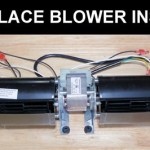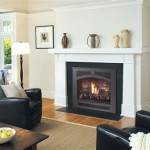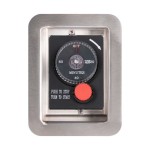See-Thru Fireplace Gas Logs: A Comprehensive Overview
See-thru fireplaces, also known as double-sided or peninsula fireplaces, offer a unique design element, allowing flames to be viewed from two adjacent spaces. This configuration not only adds visual appeal but also provides a functional heat source for multiple rooms. The use of gas logs in these fireplaces combines the aesthetic of a traditional wood-burning fireplace with the convenience and efficiency of gas. Consequently, understanding the nuances of see-thru fireplace gas logs is crucial for homeowners and designers alike.
This article explores the characteristics, benefits, installation considerations, maintenance requirements, and safety aspects associated with see-thru fireplace gas logs, providing a comprehensive overview for informed decision-making.
Understanding See-Thru Fireplace Design
The spatial design of a see-thru fireplace is its defining characteristic. Instead of being confined to a single room, the firebox is open on two sides, typically facing different areas within the home. This design creates a visual connection between the two spaces, enhancing the overall ambiance and flow. Architects and interior designers often incorporate see-thru fireplaces into open-concept layouts to visually divide areas while maintaining a sense of togetherness. The placement of the fireplace is critical, as it can serve as a focal point in both rooms.
This type of fireplace can be strategically positioned to separate a living room from a dining room, a kitchen from a family room, or even an indoor living space from an outdoor patio. The placement maximizes the fireplace’s visual impact and heating potential. Furthermore, the architectural style of the home often dictates the overall design of the see-thru fireplace, ranging from traditional brick and stone surrounds to more contemporary metal or glass enclosures.
The flue and venting system for a see-thru fireplace is typically more complex than that of a single-sided fireplace. Careful planning is essential to ensure proper ventilation and prevent the accumulation of hazardous gases. Depending on the design and location of the fireplace, the venting system may need to be routed through walls, ceilings, or even the roof. Local building codes and regulations must be strictly adhered to during the installation process to guarantee safety and compliance.
Advantages of Using Gas Logs in See-Thru Fireplaces
Gas logs offer several advantages over traditional wood-burning fires, particularly in see-thru fireplace installations. One of the most significant benefits is convenience. With gas logs, there is no need to haul, stack, or store wood. The fireplace can be ignited with the flip of a switch or the push of a button on a remote control, providing instant warmth and ambiance. This eliminates the time and effort associated with preparing and maintaining a wood-burning fire.
Another key advantage is efficiency. Gas logs burn cleaner than wood, producing fewer emissions and air pollutants. This not only benefits the environment but also reduces the need for frequent chimney cleaning. Furthermore, gas logs offer more consistent and controllable heat output compared to wood fires. The flame height and heat intensity can be easily adjusted to suit individual preferences and room temperatures. This precise control results in greater energy efficiency and reduced fuel consumption.
Aesthetics are also a major consideration. Modern gas log sets are designed to realistically mimic the appearance of natural wood, with intricate details and realistic flame patterns. Advances in manufacturing techniques have resulted in gas logs that are virtually indistinguishable from real wood, providing the same visual appeal without the mess and hassle. Moreover, gas logs are available in a wide range of styles and sizes to complement any décor.
Safety is also enhanced with gas logs. Unlike wood-burning fires, gas logs produce no embers or sparks, reducing the risk of accidental fires. The use of a sealed firebox further minimizes the potential for carbon monoxide leaks. Many gas log sets are equipped with safety features such as oxygen depletion sensors (ODS), which automatically shut off the gas supply if oxygen levels become dangerously low. These safety measures provide added peace of mind for homeowners.
Installation Considerations for See-Thru Fireplace Gas Logs
The installation of gas logs in a see-thru fireplace requires careful planning and execution to ensure proper functionality and safety. The first step is to determine the appropriate size and type of gas logs for the fireplace. The size of the firebox will dictate the size of the log set, while the type of gas (natural gas or propane) will determine the appropriate gas valve and burner system. It is essential to consult with a qualified gas technician to ensure that the chosen log set is compatible with the existing gas supply and fireplace infrastructure.
Proper ventilation is crucial for see-thru fireplaces. The venting system must be designed to effectively remove combustion gases and prevent backdrafting. A properly sized chimney or vent pipe is essential to ensure adequate airflow. In some cases, a direct-vent system may be required, which draws combustion air from outside the home and vents exhaust gases directly outdoors. This type of system is particularly important for newer, airtight homes where indoor air quality is a concern.
The gas line connection must be performed by a licensed gas fitter or plumber. The gas line should be properly sized and pressure-tested to ensure that it can supply adequate gas to the fireplace. A shut-off valve should be installed near the fireplace for safety and maintenance purposes. The gas line connection must comply with all local building codes and regulations.
Once the gas line is connected, the gas log set can be installed. The logs should be arranged according to the manufacturer's instructions to ensure proper flame distribution and heat output. The pilot light should be lit and the gas valve should be tested to verify that it is functioning correctly. A carbon monoxide detector should be installed in the vicinity of the fireplace to provide an additional layer of safety.
Maintenance and Safety Tips
Regular maintenance is essential to ensure the continued safe and efficient operation of see-thru fireplace gas logs. The fireplace should be inspected annually by a qualified technician to check for any signs of damage or wear. The gas logs should be cleaned periodically to remove dust and debris, which can affect flame quality and heat output. A soft brush or vacuum cleaner attachment can be used to gently clean the logs.
The venting system should also be inspected and cleaned regularly to prevent blockages. A clogged chimney or vent pipe can lead to dangerous carbon monoxide buildup. Professional chimney sweeps can remove creosote and other debris from the venting system, ensuring proper airflow. The frequency of chimney cleaning will depend on the usage of the fireplace and the type of gas logs used.
It is vital to ensure that the area around the fireplace is kept clear of flammable materials. Curtains, furniture, and other combustible items should be positioned at a safe distance from the fireplace to prevent accidental fires. Children and pets should be supervised around the fireplace to prevent burns or other injuries.
Carbon monoxide detectors should be installed and maintained in good working order. These detectors provide an early warning of carbon monoxide leaks, which can be deadly. The batteries in the detectors should be replaced regularly, and the detectors should be tested periodically to ensure that they are functioning correctly. If a carbon monoxide alarm sounds, evacuate the premises immediately and contact emergency services.
Never use flammable liquids to ignite or enhance the flames in a gas log fireplace. This can create a dangerous explosion or fire hazard. Only use the fireplace in accordance with the manufacturer's instructions. If any problems or malfunctions are noticed, discontinue use immediately and contact a qualified technician for repairs.
By following these maintenance and safety tips, homeowners can enjoy the beauty and warmth of their see-thru fireplace gas logs safely and efficiently for many years to come. Adherence to safety protocols and regular maintenance checks are paramount to preserving the functionality and safety of this unique architectural feature.

Double Sided Gas Logs Vented And Ventless Sets

Real Fyre R 2 Golden Oak Vented Gas Log Set See Thru

Monessen Designer Ventfree See Thru Fireplace With Multi Side Log Set Fine S Gas

Rasmussen Df Exf Evening Crossfire Double Sided Gas Logs Only

Real Fyre Chao 2 Charred American Oak Vented Gas Log Set See Thru Ansi Certified

18 Evening Embers See Thru Ventless Gas Fireplace Logs

Hargrove Western Pine See Through Shallow Vented Gas Log Set Fireplace Deals

Double Sided Gas Logs Vented And Ventless Sets

Hargrove Inferno See Through Shallow Vented Gas Log Set With System 4 Burner Propane Specialized Hgissss S4b

Rasmussen Df Els Evening Lone Star Double Sided Gas Logs Only








